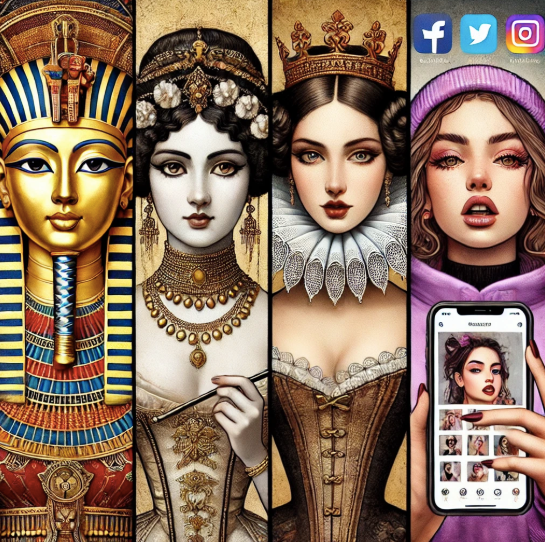The Impact of Appearance on Emotional Deprivation: An Evolutionary and Cultural Perspective
- atelierpsychothera
- Mar 13
- 2 min read

In every era and society, physical appearance has played a significant role in shaping an individual’s self-worth, social acceptance, and emotional well-being. The perception of beauty and attractiveness is not static; it has evolved over time, influenced by cultural norms, economic structures, and technological advancements. This article explores how historical and cultural shifts in beauty standards have contributed to emotional deprivation, leaving individuals vulnerable to feelings of inadequacy and loneliness.
Evolutionary Roots of Appearance Perception
From an evolutionary standpoint, human beings have been wired to associate physical attractiveness with reproductive success, health, and social dominance. Early humans relied on physical markers such as symmetry, skin clarity, and body proportion to gauge an individual's genetic fitness. Over time, these innate preferences have been reinforced through social and cultural narratives, leading to the deep-rooted association between appearance and social validation.
Cultural Transformations and Beauty Standards
Throughout history, different civilizations have upheld varying beauty ideals, often shaping social structures and personal self-esteem. For example:
Ancient Egypt (3000 BCE - 300 BCE): Beauty was linked to symmetry and elaborate adornment. Both men and women used cosmetics, wigs, and perfumes to enhance their appearance and social standing.
The Renaissance Era (14th-17th Century): Full-figured bodies and pale skin were favored as symbols of wealth and prosperity. Beauty became a marker of social class rather than just health.
The Victorian Era (19th Century): Modesty and delicate femininity were emphasized, leading to restrictive clothing like corsets that influenced body image and self-perception.
20th-21st Century: The rapid evolution of media, fashion, and technology has led to fluctuating beauty trends, from the hourglass figure of the 1950s to the ultra-thin ideal of the 1990s, and now to the influencer-driven aesthetics of today’s digital age.
Emotional Deprivation and the Cost of Beauty Standards
As societies have increasingly tied self-worth to appearance, individuals who do not conform to prevailing beauty norms often experience emotional deprivation. Some key psychological consequences include:
Low Self-Esteem: People who perceive themselves as unattractive may struggle with self-worth and confidence.
Social Isolation: Appearance-based discrimination can lead to exclusion from social groups, romantic opportunities, or professional advancement.
Body Dysmorphia and Anxiety: Constant exposure to idealized beauty in media contributes to unrealistic self-expectations and mental health struggles.
Cultural Resistance and Redefining Beauty
While historical patterns have enforced rigid beauty ideals, modern movements are challenging these norms. The rise of body positivity, inclusivity in fashion, and digital campaigns promoting self-acceptance are paving the way for a broader definition of beauty. In many cultures, efforts are being made to detach personal worth from appearance, promoting emotional well-being and self-acceptance.
The relationship between appearance and emotional deprivation has been shaped by centuries of evolutionary conditioning and cultural reinforcement. However, as society progresses, there is an opportunity to redefine beauty standards and prioritize inner fulfillment over external validation. By understanding historical influences, individuals can navigate modern pressures with greater awareness and self-compassion, reducing the emotional toll of unattainable beauty ideals.



Comments